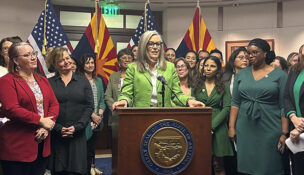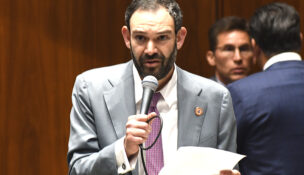Financial incentive bills aim to ease teacher shortages
Arizona Capitol Reports Staff//February 16, 2007//[read_meter]
Financial incentive bills aim to ease teacher shortages
Arizona Capitol Reports Staff//February 16, 2007//[read_meter]
Two House bills aim to relieve teacher shortages in some Arizona school districts by reimbursing university graduates for student loans if they teach in areas that need educators. “I was...
No tags for this post.

















